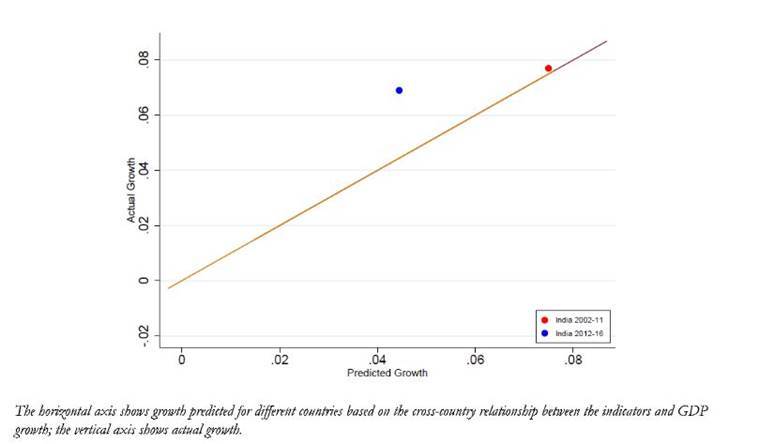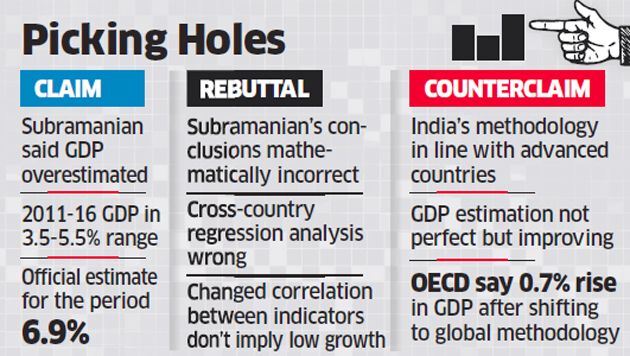7667766266
enquiry@shankarias.in
Why in news?
Former Chief Economic Adviser (CEA) Arvind Subramanian recently claimed in a research paper that India’s GDP growth from 2011-12 to 2016-17 was likely to have been overestimated.
What is the former CEA’s claim?
What were the parameters used?
What are the key arguments?
Correlation between annual growth of indicators and GDP, 2001-2011 and 2012-2017

The line shows the growth predicted by the indicators (horizontal axis) and what is officially reported (vertical axis).
What was the government response?

What are the implications of overestimation?
What lies ahead?
Source: Indian Express
Quick Fact
Economic Advisory Council to the PM